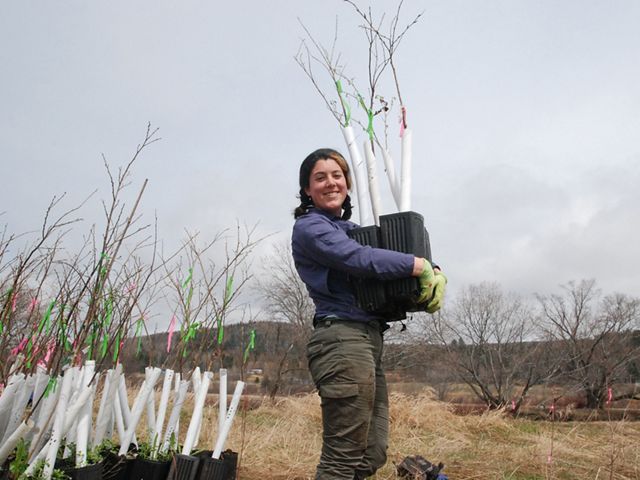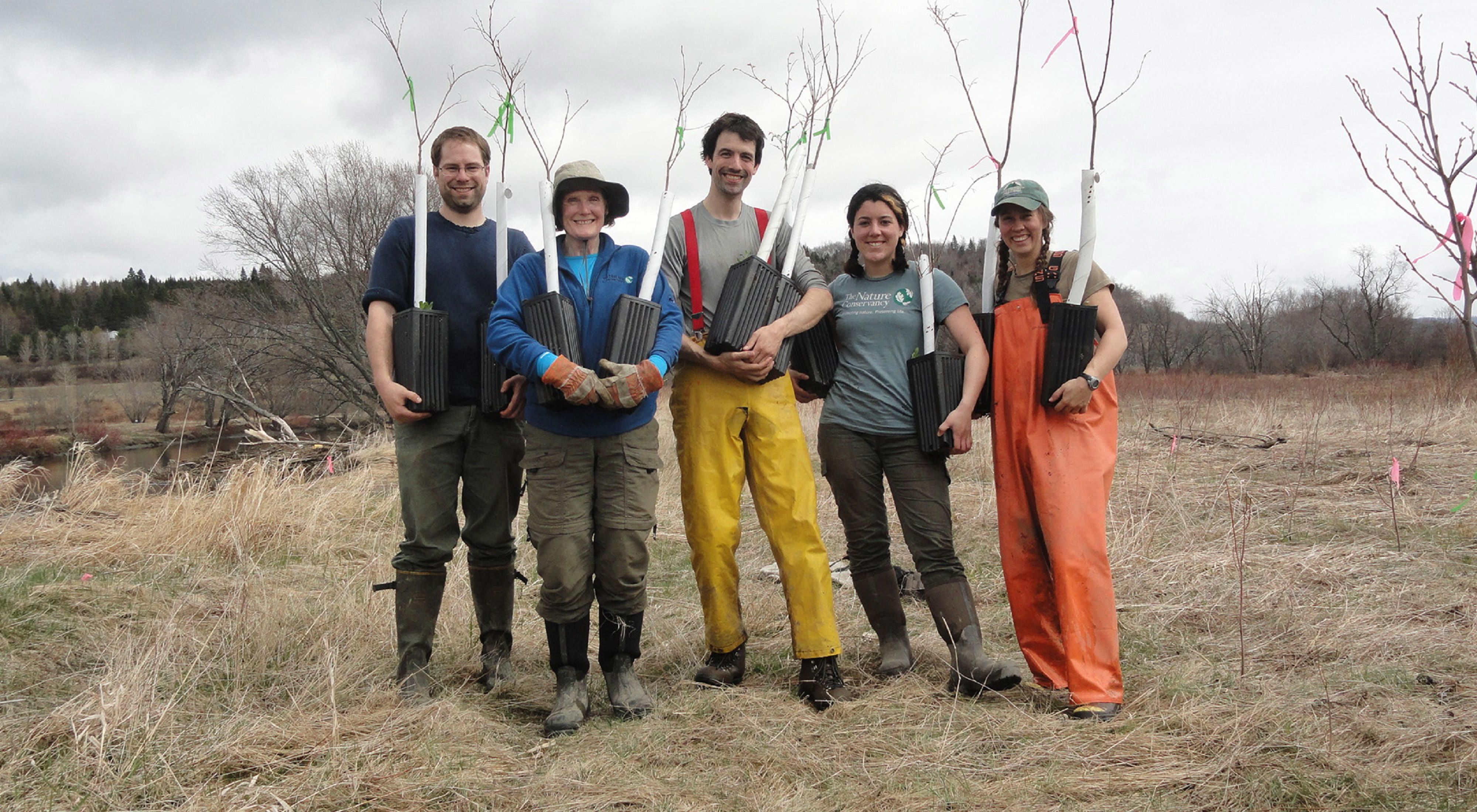Largest Elm Restoration in the Northeast
We are planting 7,000 American elm trees over three years.
The majestic American elm was once the biggest and longest lived tree on our northern floodplains. They held a unique and critical niche that no other floodplain tree has been able to fill since their precipitous demise in the 1970's.
The Many Gifts of the American Elm
The roots of the American elm are mighty. They can be submerged in floodwater for days and they naturally filter sediment while also tempering the impacts of flood events. Their trunks can also withstand the impacts of bashing from spring storms and ice-melt, making elms an important part of floodplain forests. Large mature elms once grew taller than other floodplain tree species and provided important habitat for eagles, ospreys, barred owls, a host of breeding songbirds, and mammals such as roosting bats and flying squirrels.

What We're Doing
Sadly, American elms today are diminished from their former glory as the biggest, oldest trees along our rivers and gracing our Elm Streets—over 30,000 American streets bear the name "Elm." What caused their fall? The disastrous Dutch-elm disease felled an estimated 77 million American Elms in the 1970s.
To restore American elms to their former importance on our floodplains, The Conservancy is working with the US Forest Service to develop a genetically diverse population of elms that are Dutch-elm disease tolerant. Conservancy Ecologist, Dr. Christian Marks, has been developing these new strains of elms which are being planted by the tens of thousands throughout the Connecticut River region—making it the largest Elm restoration effort in the northeast.
Here in Vermont
Our Vermont team is planting over 7,000 elms within three years in the Connecticut and Champlain Valley basins to improve water quality, increase flood resiliency, and provide critical habitat for our wildlife. We are also working with the Vermont Tree Goods team to raise funds and educate the public about the importance of this work.
Listen to our elm story on Vermont Public Radio.
